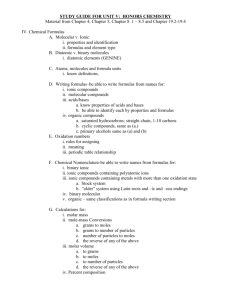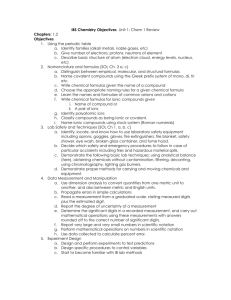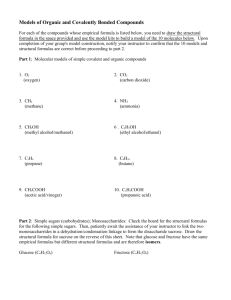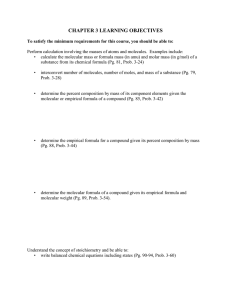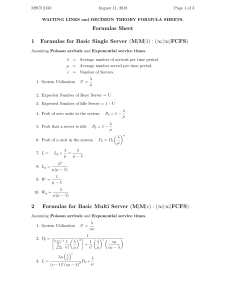CHAPTER 2 LEARNING OBJECTIVES
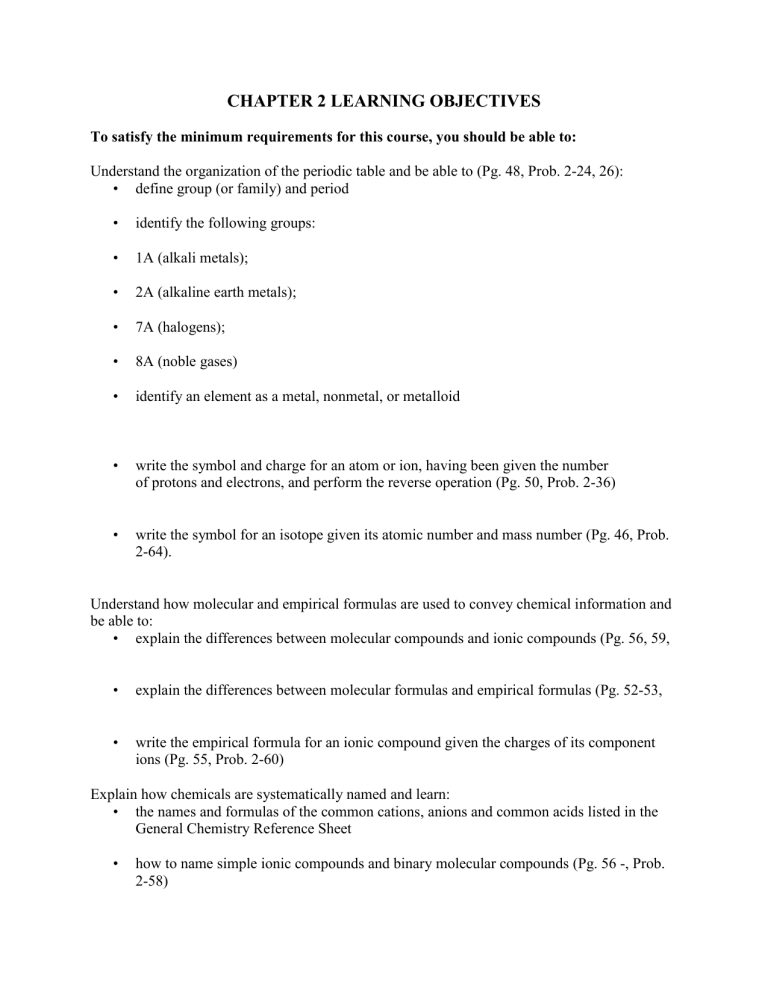
CHAPTER 2 LEARNING OBJECTIVES
To satisfy the minimum requirements for this course, you should be able to:
Understand the organization of the periodic table and be able to (Pg. 48, Prob. 2-24, 26):
• define group (or family) and period
• identify the following groups:
• 1A (alkali metals);
• 2A (alkaline earth metals);
• 7A (halogens);
• 8A (noble gases)
• identify an element as a metal, nonmetal, or metalloid
• write the symbol and charge for an atom or ion, having been given the number of protons and electrons, and perform the reverse operation (Pg. 50, Prob. 2-36)
• write the symbol for an isotope given its atomic number and mass number (Pg. 46, Prob.
2-64).
Understand how molecular and empirical formulas are used to convey chemical information and be able to:
• explain the differences between molecular compounds and ionic compounds (Pg. 56, 59,
• explain the differences between molecular formulas and empirical formulas (Pg. 52-53,
• write the empirical formula for an ionic compound given the charges of its component ions (Pg. 55, Prob. 2-60)
Explain how chemicals are systematically named and learn:
• the names and formulas of the common cations, anions and common acids listed in the
General Chemistry Reference Sheet
• how to name simple ionic compounds and binary molecular compounds (Pg. 56 -, Prob.
2-58)


